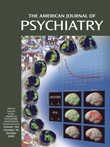Catatonia: From Psychopathology to Neurobiology
This is an excellent book. One of us (J.W.) has been studying catatonia for more than 20 years and has seldom seen a better reference on the subject. This work starts where the descriptive psychopathology of Kahlbaum (1) and the epidemiology of Morrison (2) left off. It begins with a review of the history of the concept of catatonia. Hallmark papers are cited and adequately explained. This is followed by an important chapter on the epidemiology of catatonia, which provides vital information on trends over the years in the face of what seems to be a decline in the occurrence of catatonia, enhanced by the inclusion of a segment on nosology. The interesting reading continues with each chapter, where phenomenology remains a constant strong point.
The educational value of this small book should not be understated. Each chapter contains important and concise information for the clinician, resident, and experienced academician. The descriptive detail is marvelous. Michael Taylor provides a brief but extremely educational bit on the clinical examination of catatonic patients. Descriptions of the course of different types of catatonia are given, and the differential diagnosis of the precursors of this condition is provided. Treatments for this syndrome are well discussed and fairly handled. The book concludes with a discussion of the prognosis and complications of catatonia, followed by theoretical issues of genetics, animal models, and brain evolution. The use of ECT for acute catatonia is briefly described. The proper pharmacological interventions are well covered by the chapter authors. The neurological underpinnings of treatment are given a brief but clear review.
It would have been nice to see more detailed information on all the areas covered by this book because the syndrome of catatonia is poorly understood by so many people. This relative shortcoming is likely to be attributed to the paucity of good research on the syndrome. Indeed, catatonia is one of the neuropsychiatric conditions that has been neglected in much of the research of the past few years. Catatonia does indeed exist in the 21st century. It is serious and deserves our attention. Like many conditions of years past, catatonia has languished in our collective ignorance. This book is an enlightening reminder that we have not finished learning about catatonia and need to study it further. This book is a very good start and we highly recommend it.
1. Kahlbaum KL: Catatonia (1874). Translated by Levi Y, Pridon T. Baltimore, Johns Hopkins University Press, 1973Google Scholar
2. Morrison JR: Catatonia: retarded and excited types. Arch Gen Psychiatry 1973; 28:39–41Crossref, Medline, Google Scholar



